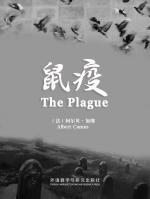Book Review
The Plague is one of the representative works written by the renowned writer Albert Camus. The book is about a plague burst in city Oran, and documents the whole course of how a group of people---- including the hero doctor Rieux, Tarrou, foreign reporter Rambert, criminal Cottard and so on. In the record of the narrator, we can see a knot of politicians, who were arrogance and ignorance and still thought about their own interests while countless townsfolk ’ s lives were threatened; we can see how ordinary people like doctor Rieux, facing such a horrible disaster, exerted all their energy to fight against the plague, though themselves were also lacking of confidence and constantly defeated by setbacks; we can see people like reporter Rambert, who initially regarded himself as a person “ don ’ t belong here ” and tried all means to leave, ending with dedicating himself to the city Oran.
There are several characters especially worth mentioning throughout the book, for they respectively lead to certain kinds of the author ’ s thoughts. The first one is Rambert, on whom happened a complete attitudinal shift. From focusing on his self-interest to joining the efforts of doctors, his image can better reflect the brilliance of humanity as he actually had freedom of choice on whether to fight for Oran. Through Rambert, the author also conveyed his opinion, that is---- whether people grew up in this city or not, they became a closely connected group in front of the plague. The second one is Cottard, a man exiled by society, who found his meaning of existence during the plague and therefore welcomed the plague. When the plague passed away, his life withered away with it. He was shaped as man who was extremely egoistic, indifferent and finally fell into insanity. This character enabled the thought of the book to reach a higher level, which was presented in the conversation between Rieux and Tarrou---- “ Each of us has the plague within him, no one on earth is free from it. We must keep endless watch on ourselves lest in a careless moment we breathe in somebody ’ s face and fasten the infection on him. All the rest-- health, integrity, purity-- is a product of the human will, of a vigilance that must never falter. It ’ s a wearying business, being plague-stricken. But it ’ s still more wearying to refuse to be it. ” In this dialogue, the word “ plague ” symbolized the evil factors in human nature, against which human had to fight in order not to be assimilated. “ Plague ” also represented the indifference and other dark sides of human. The last one is doctor Rieux, a character stood for the subversion of heroism. There were so much shimmers in his soul, however, all he thought about was to do what should be done. In the rampant plague, while everyone was shrouded in loneliness, anxiety and mental pain, a hero was someone who stuck to integrity and goodness.
In addition, the perspective of narration also worth noting. Most of the content were written in the third-person narrative, which enabled long and brilliant passages of description of the plague outbreak and careful observation of the townsfolk to become possible. Meanwhile, this way gave the author space to interpret the theme naturally.
Finally, reading The Plague during the outbreak of COVID-19 brings me a singular sense, which may be expressed as a combination between reality and the absurdity of the plot. Maybe all of us should read The Plague during this period of time and certainly we will have a deeper understanding of both the work written by Camus and what we ’ re going through.



 京公网安备 11010802032529号
京公网安备 11010802032529号